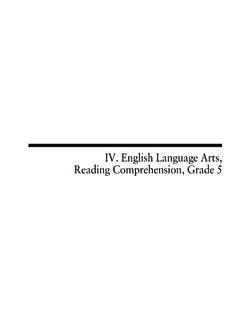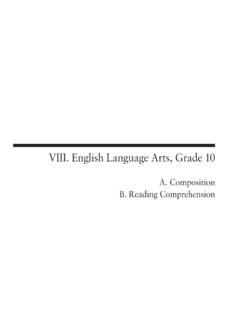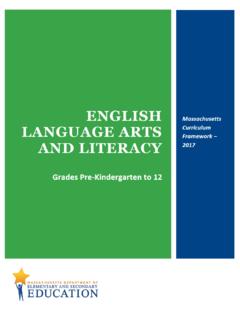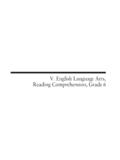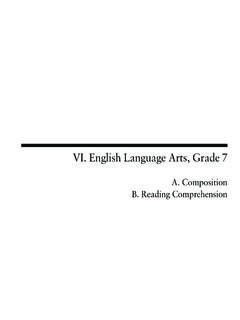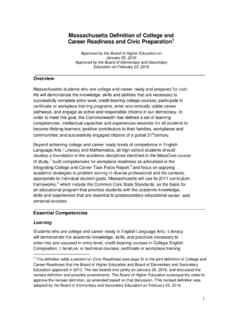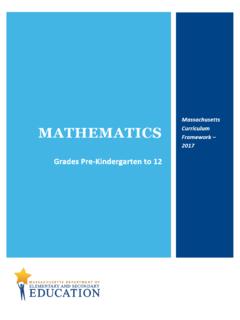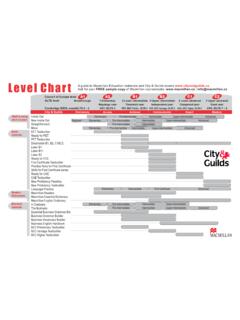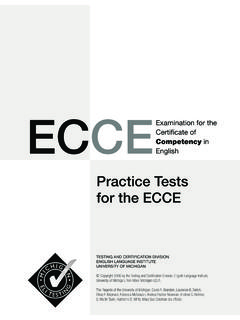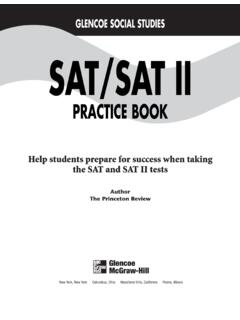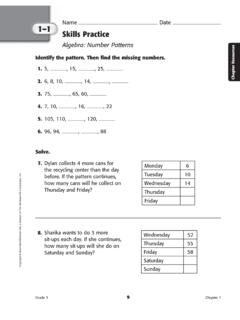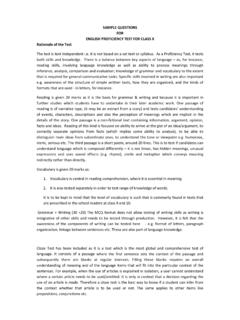Transcription of Grade 3 English Language Arts Practice Test 2013
1 Massachusetts Comprehensive Assessment SystemPractice TestEnglish Language arts Reading ComprehensionGRADE 3 Student NameSchool NameDistrict NameThis is a Practice test. Mark your answers to ALL questions in this Practice Test Booklet. Mark only one answer for each multiple-choice question. If you are not sure of the answer, choose the answer you think is best. Mark your choice by filling in circle A, B, C, or D. You may make notes outside the boxes where you mark your answers. Do not make any stray marks INSIDE the boxes. 1 Go On Reading Comprehension DIRECTIONS This Practice test contains one reading selection with two multiple-choice questions and one open-response question. For multiple-choice questions, mark your answers by filling in the circle next to the best answer. For the open-response question, write your answer in the space provided below the question. As a child, George Washington Carver was a slave who belonged to Moses and Susan Carver. He grew up during a time when African American children did not have the same opportunities as everyone else, but he still found a way to go to school and become a successful scientist.
2 Read the article to find out more about George Washington Carver s life and answer the questions that follow. George Washington Ca rver the peanut scientist Born 1864 (?) January 5, 1943 by Patricia and Fredrick McKissack Why? and How? 1 W hen George was about twelve years old, he left the Carvers. He wanted to go to school. He walked to Neosho, Missouri. A family found George sleeping in their barn. They let the boy live with them. George worked and went to Lincoln School. 2 A few years passed. George learned all he could at Lincoln. He heard about a school in Fort Scott, Kansas. So he moved there. Another family let George live with them. Soon, young Carver was old enough to live on his own. For a while he moved from place to place. 3 Then he came to a small Kansas town. Another man named George Carver lived there. So George added a W to his name. It is for Washington, he told his friends.
3 George Washington Carver he liked the sound of his new name. 4 George wanted to go to college. Not many black men went to college in the 1890s. But George Carver was sure that he would go. He worked hard and saved his money. Reading Comprehension 2 Go On o stay at Iowa State and teach. But ed Professor Carver to come teach at ma. d by 96, o Professor Carver said that learning skills ke farming was the key to unlock the golden door of freedom for African Americans. 5 At last Carver went to college in Iowa. There he studied what he liked best plants and farming. Then he went to Iowa State College in Ames to study. He graduated in 1896. Still, there was much more he wanted to learn. 6 George Washington Carver would spend the rest of his life asking questions and looking for the answers. He was a scientist. And scientists are always asking Why? and How? Tuskegee Farm 7 G eorge Carver was asked tBooker T.
4 Washington askTuskegee Institute in Alaba8 The all-black school was starteBooker T. Washington in 1881. In 18Mr. Washington wrote a letter tProfessor Carver: Will you come to Tuskegee to teach? Carver thought about it. Then he answered: I am coming. 9 It was fall 1896 when Professor Carver went to Tuskegee. He had thirteen students. His job was to teach science. But he had no lab. This didn t stop him. The class made a lab from things they found. 10 The school also had a farm. The soil was poor. The cotton plants were small and weak. Farmers in the South had been growing cotton on the land for many years. Professor Carver said, The soil needs a rest. He and the class did a project. We will not plant cotton, he said. We will plant sweet lipotatoes. And they did. Reading Comprehension 3 Go On 11 The next year they grew cowpeas, another kind of vegetable.
5 The land has to rest, he said. So the third year they grew cotton again. That cotton crop grew bigger and stronger than before. Carver was one of the first scientists to teach crop rotation growing different plants to make the soil better. 12 The boll weevil is a bug that eats cotton plants. In the early 1900s, boll weevils came into the United States from Mexico. Farmers were worried. What could they do? Carver told them to plant goobers! Boll weevils don t like goobers. Plant Goobers! 13 G oobers! 14 Goober is an old African name for peanut. Slaves brought goobers from Africa. They grew them in small gardens. Goobers were mostly used to feed animals. 15 Farmers came to Tuskegee from all over the South. Professor Carver told them about his work. What can be done with peanuts? They are only good for hogs, people said. Carver found many ways to use peanuts. His students liked peanut butter best.
6 16 Who will buy the peanuts? Professor Carver didn t know. But, as always, he kept looking for answers. 17 Then an idea came. The quiet professor asked a group of important businessmen to have dinner with him. He served them bread, soup, meat, cookies, and ice cream. 18 They all agreed that the food was good very good. Then Professor Carver told them: Everything they had eaten had been made with peanuts! What a surprise! Reading Comprehension 4 Go On 19 Professor Carver was full of more surprises. He showed the businessmen what they could make from the peanuts. He showed them why they should buy the farmers peanut crops. What he said made sense. Now the farmers could sell their crops. 20 It is no surprise that George Washington Carver was called the farmer s best friend. George Washington Carver: The Peanut Scientist by Patricia and Fredrick McKissack. Copyright 2002 by Enslow Publishers, Inc.
7 Reprinted by permission of Enslow Publishers, Inc. Photograph reprinted by permission of the State Historical Society of Missouri, Columbia. Mark your choices for multiple-choice questions 1 and 2 by filling in the circle next to the best answer. 1 According to the article, what was the main reason Carver chose to give himself a middle name? A to make himself seem like an average student B to make himself seem like an important scientist C to show respect for a president with the same name D to be different from a person in town with the same name 2 Which of the following questions is answered in the section titled Plant Goobers! ? A Why should farmers plant peanuts? B How should farmers plant peanuts? C When should farmers plant peanuts? D Where should farmers plant peanuts? Reading Comprehension Question 3 is an open-response question. Read the question carefully. Explain your answer.
8 Add supporting details. Double-check your work. Write your answer to question 3 in the lined space below. Based on the article, explain why George Washington Carver is famous. Support your answer with important information from the article. 5 ReadiMCAS_2013_Gr3_ELA_PT 3
